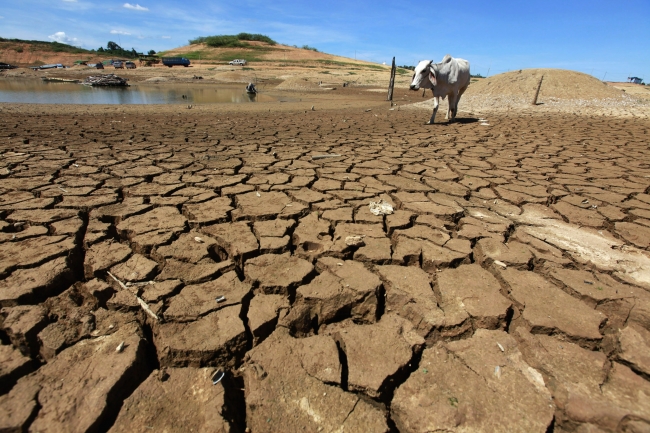
Last summer, there was hardly any rain from the beginning of June to end of September and this caused a drought that was even worse than the drought in 2003. A drought occurs when this caused a drought that was even worse than the drought in 2003. A drought occurs when there is little to none precipitation coupled with high levels of evaporation and there being a high water demand. When a combination of these factors causes the water level to drop to 150 mm in the Rijnland area there is a drought. In the Netherlands we see water out of the tap as one of the most ordinary things in our life’s, but this is going to change. Municipalities and water boards have an important role in the prevention of flooding and drought, but can’t do this alone. Companies like Rijnland and Dunea will do everything to provide everyone with water and at the same time to safe everyone from flooding. But we, as citizens, should start thinking as well and maybe change our lifestyle. This because fifty to seventy percent of the surface in cities is in fact private land.
First, there are different ways to prevent yourself against flooding. More green in the garden ensures that rainwater can drain away easier. With a fully paved garden, it can stay on the tiles for a long time. Second, store rainwater in a barrel and do not let it run into the sewer directly. You can use the water in the garden, for example. Furthermore take green roofs, a green roof is a roof that is covered with plants. A green roof can absorb about 50 percent of the rainwater and release it into the atmosphere. After all, let your rooftop water enter an infiltration facility underground wherefore it gradually sinks into the ground.
The other side is how to save water? The average Dutch person consumes a small 120 liters of clean drinking water day. Most of this is used during showering or using the bath. The toilet and the washing machine follow in a good third and fourth place. The easiest solutions is to shower less long and choose the shower above the bath, this not only saves you water but also money. The second one is to use rainwater for flushing your toilet and maybe even for your shower. Another option is to install a heat exchanger to re-use rest heat from the waste water. Furthermore invest in energy and water-efficient equipment, such as a high-efficiency water heater or A-labeled dishwasher.
There are so many small and easy solutions, but why don’t we take action? For decades now we have wasted and mismanaged the world’s water supplies. Today, 27 countries are short of water, a quarter of the world’s population has no safe water, 46 percent have no proper sanitation and each year four million children die of water-borne diseases. As most of the world’s major river systems cross several national boundaries, the scope disputes and the threat to international security is becoming more and more real. Therefore maybe you should ask yourself the question if you already do enough to save water or could you do more, because even you can make a change!
You must be logged in to post a comment.